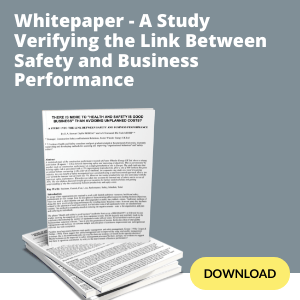OSHA is aware of fatigue’s impact on workplace safety and the risk inherent in fatigued workers. The OSHA web site provides compelling data and examples demonstrating it. For example, a safety incident is 30% more likely to occur during night shifts, and worker fatigue was a factor in the nuclear accidents at both Chernobyl and Three Mile Island as well as in the explosion of the space shuttle Challenger.

In Fatigue Risk Management, Understanding Regulations Vs Responsibilities is Vital
The dangers presented by fatigue risk are becoming more widely understood. As a result, some specialized US government agencies, like the Federal Aviation Administration and the Federal Motor Carrier Safety Administration, have regulations that aim to limit work hours in order to reduce fatigue risk, and some states have laws preventing nurses from working mandatory overtime.
But OSHA Has No Regulation nor Standard Addressing Managing Fatigue Specifically.
Consequently, many organizations involved in safety-sensitive work may give little attention to worker fatigue because they conflate safety performance with regulatory compliance. In other words, they may believe that if there is no safety regulation to follow, there must be no safety risk to consider.
There are, of course, valid reasons why OSHA may have not yet furthered a fatigue standard or regulations for fatigue management despite knowing the risk it can present in the workplace.
For one, fatigue is subjective. Though no one is immune to fatigue and its effects, everyone is different, and fatigue can be brought on by different factors and at different rates.
Second, because not all fatigue is work-related, OSHA cannot establish and enforce regulations unrelated to the workplace. For instance, the agency can promote healthy sleep habits at home, but it cannot regulate and enforce them.
OSHA’s recognition of fatigue’s impact on workplace safety and the risk it presents is valuable, and so too is the information they provide for workplaces to help manage it. But it is still the responsibility of employers and safety professionals to act upon the information, raise awareness of fatigue risk in their respective organizations, and implement policies, practices, and/or technologies that reduce it.
Fatigue Risk Management - Easier Than It Seems
Some organizations may be hesitant to implement a fatigue management or alertness testing program, under a misconception that it may be medically invasive and require complicated and expensive proprietary hardware. Fortunately, Predictive Safety has two complementary platforms that are entirely non-invasive and need only touchscreen tablets, personal computers, or even employees’ own smartphones.
For organizations with rotating or irregular shifts, 24-hour shift schedules, or extended shift lengths, Predictive Safety’s PRISM fatigue management system can shed light on employees’ alertness levels throughout their shifts using a proprietary algorithm based on circadian science and integrated alertness testing. PRISM can disrupt the onset of fatigue symptoms by predicting when they will occur, allowing employees to take appropriate measures to stay alert, even for the commute home.
For reliable in-the-moment, in-the-field alertness testing, Predictive Safety’s AlertMeter® is sensitive to the cognitive impairment symptomatic of fatigue as well as to other causes of diminished alertness. Plus, AlertMeter® can suitably complement an organization’s existing fitness-for-work standards, helping to identify worker impairment before risks can manifest.
Proactive, preventative measures represent the future of safety management and human performance. Predictive Safety is enthusiastic to help you choose the right solution for your organization to manage your fatigue risk.
More Resources:
6 Reasons Why Your Company Needs to Manage Work Fatigue and Impairment (Part 1)
6 Reasons Why Your Company Needs to Manage Work Fatigue and Impairment (Part 2)
3 Things Workers Should Know About Shift Worker Fatigue, From a Doctor
Managing Safety through Worker Fatigue Data
10 Steps in a Fatigue Management Plan
Circadian Rhythm and Shift Work - When the Time Changes
The Factors of Fatigue and the Fatigue Assessment Scale
3 Ways Sleep Sleep Apnea at Work is Costing Your Business (And How To Fix It)
4 Steps to Fatigue Risk Management - a Fatigue Risk Management Template
6 Fatigue Countermeasures
Fatigue in the Workplace: Myths vs. Realities
Work Fatigue Symptoms
Predictive Safety Featured On the WorkSAFE Podcast: Tech Designed to Stop Fatigue Impairment Risk in Its Tracks
The Science of Fatigue at Work
Real-Time Fatigue Monitoring & Management Software




